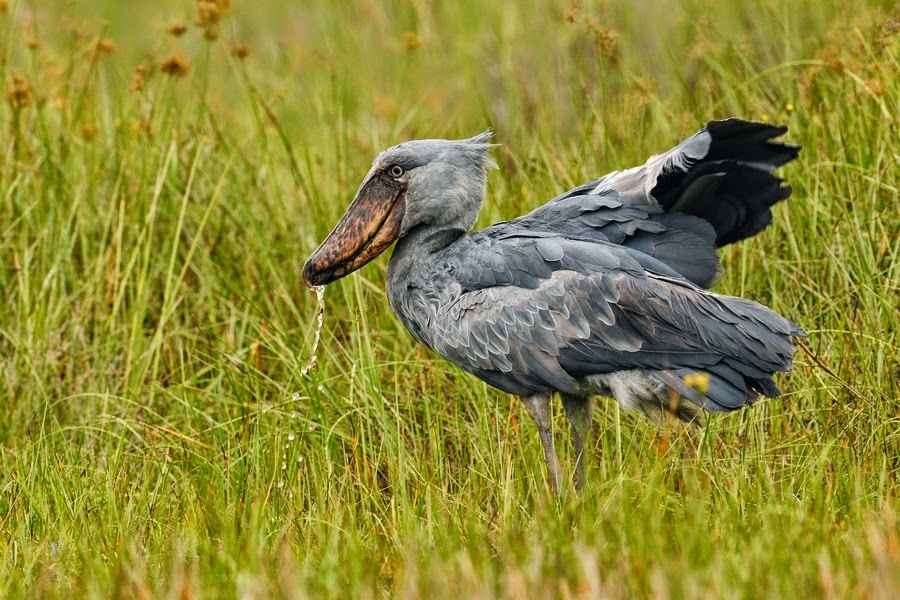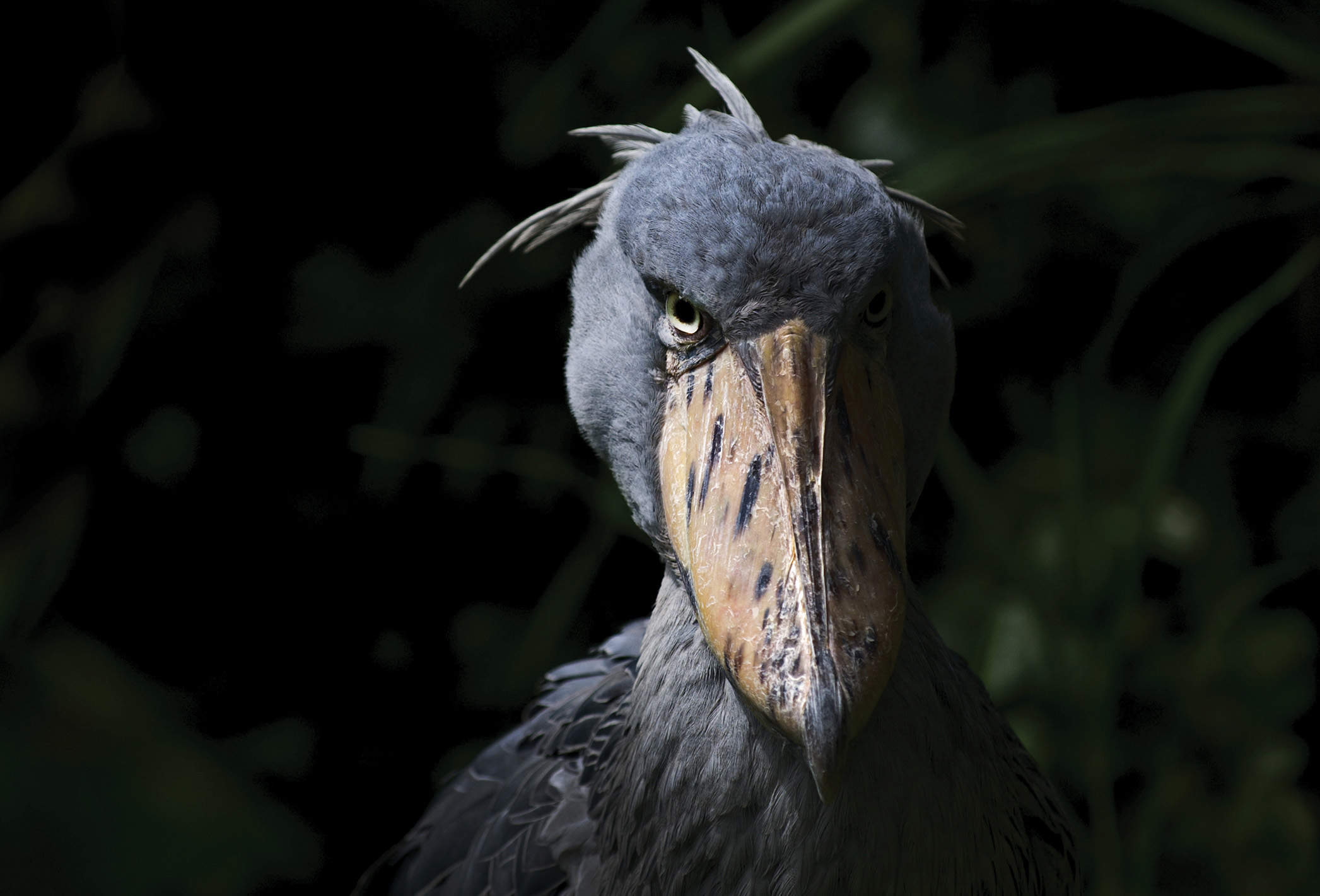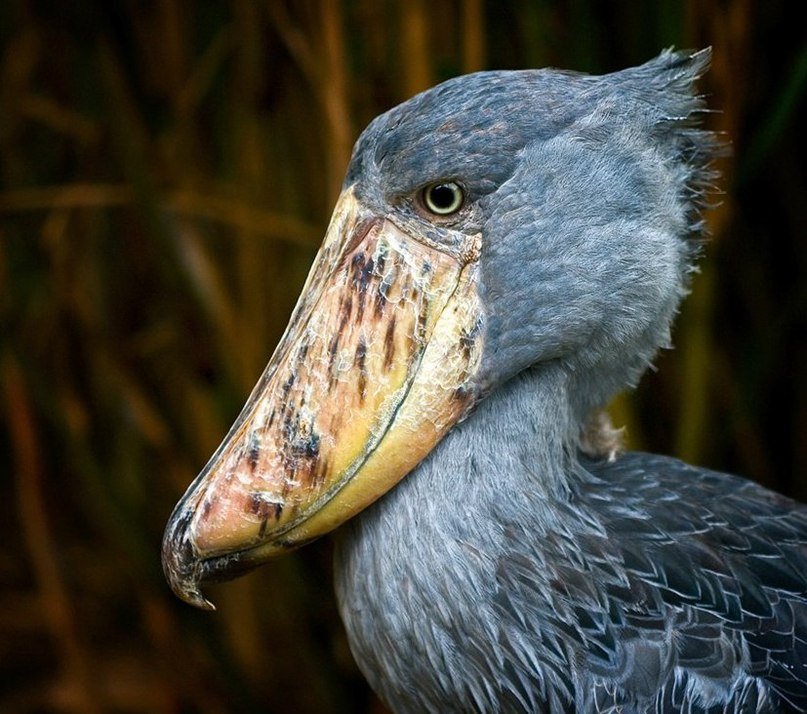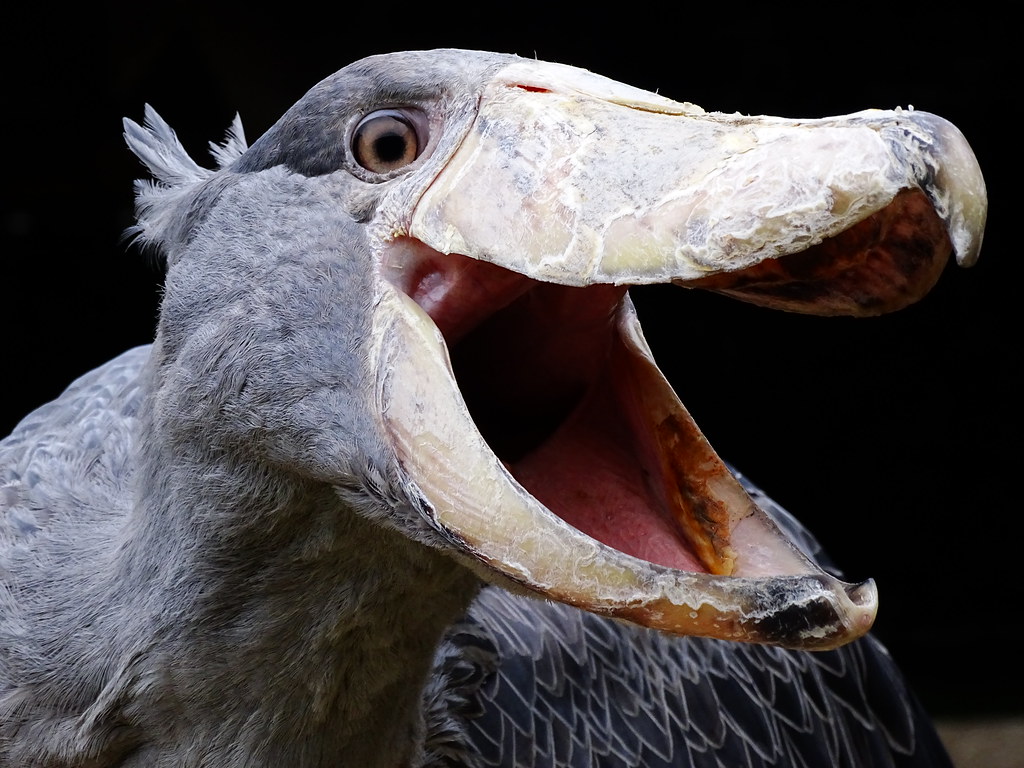The Shoebill is instantly recognizable by its large, shoe-shaped bill, which sets it apart from other avian species. With a height of up to 5 feet, it showcases a towering presence. Its gray-blue plumage, hunched posture, and intense gaze contribute to its mesmerizing and otherworldly appearance.

The Shoebill possesses remarkable hunting abilities. It patiently stalks its prey, which mainly consists of fish, frogs, and small mammals, and then strikes with astonishing speed and precision. Its robust bill acts as a formidable weapon, allowing it to seize and devour its prey with remarkable efficiency.

Unlike many birds, the Shoebill is known for its unusual foraging techniques. It often stands motionless for extended periods, waiting for prey to come within striking distance. This patient and strategic approach demonstrates the bird’s adaptability and intelligence in securing its next meal.

Shoebills are mainly found in the wetlands of Africa, where they thrive in marshy areas and swamps. Their long legs and large feet, equipped with sharp claws, enable them to navigate through challenging terrains and shallow waters with ease. This adaptation allows them to access prey that others may find inaccessible.

Shoebills are known for their elusive behavior, making them a rare sight in the wild. Their limited population and habitat loss due to wetland degradation pose significant conservation concerns. Conservation efforts are crucial to protect these unique birds and their delicate systems, providing their survival for future generations to appreciate.


The Shoebill’s distinctive physical appearance, powerful predatory skills, unique foraging techniques, adaptation to wetland habitats, and conservation significance make it a truly enigmatic bird species. Understanding and appreciating the Shoebill’s extraordinary traits contribute to its conservation and the preservation of its awe-inspiring presence in the avian world. Let us marvel at the Shoebill’s magnificence and work towards safeguarding its existence for generations to come.


